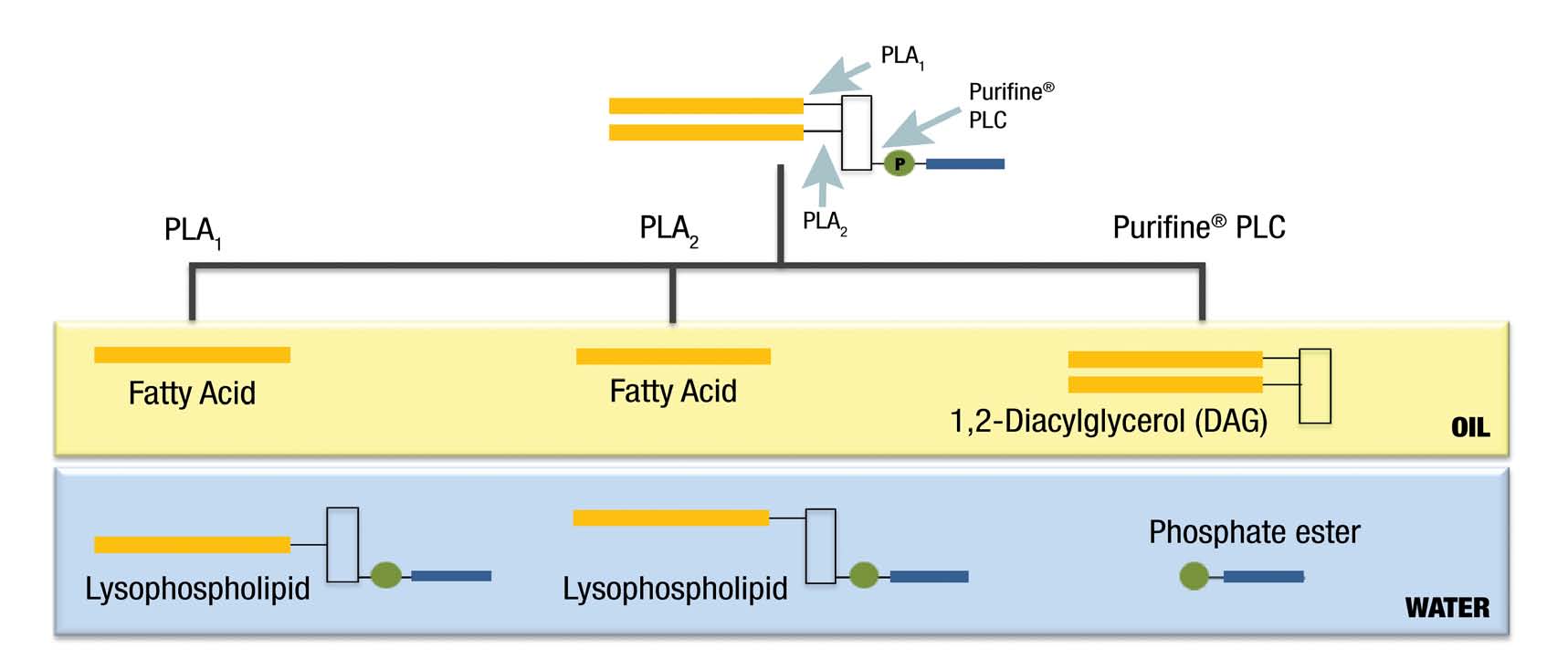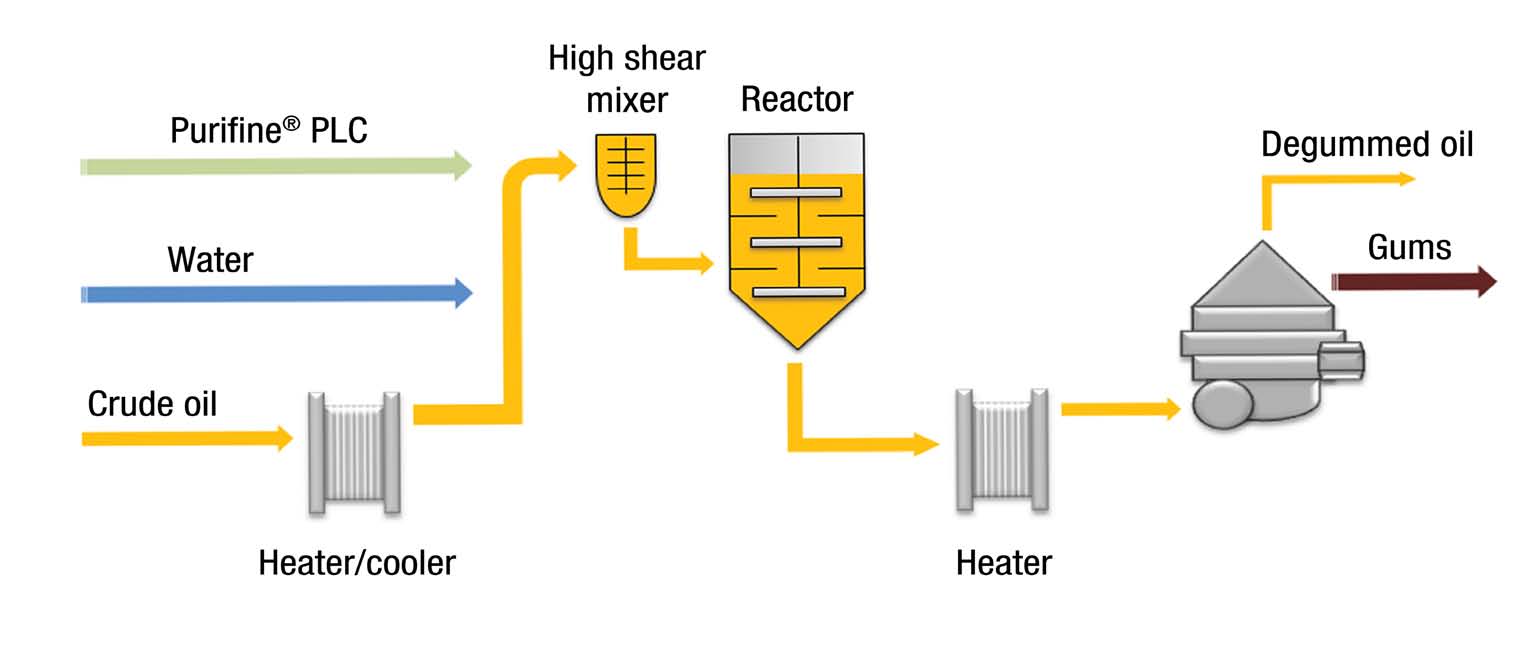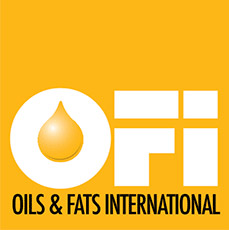1/ Enzyme Assisted Water Degumming (DSM Purifine® Enzyme)
Higher oil yields for new and existing plants
Thanks to its partnership with Royal DSM, global science-based company active in health, nutrition and materials, Desmet is offering an alternative to conventional water degumming based on the use of enzymes, with outstanding advantages: reduction of oil yield loss, refining costs and undesired by-products and waste.
Already in operation in edible oil and biodiesel processing facilities, enzymatic degumming is an alternative to water degumming that addresses the yield-loss issue.
Unlike chemical catalysts, enzymes are highly specific and act only on target molecules. It is the case of DSM’s DSM Purifine® Enzyme (phospholipase C), which specifically reacts with the phospholipid impurities in oil, leaving the bulk oil untouched.
DSM Purifine® Enzyme breaks phospholipids (phosphatidylcholine (PC) and phosphatidylethanolamine (PE)) into water-soluble and oil-soluble fragments, reducing their ability to form an emulsion. Less emulsion means less yield loss due to entrained oil, and lower gum content enables cleaner separation of oil and heavy phases, with further reduction in yield loss.
Moreover, the diacylglycerols (DAG) produced through the DSM Purifine® Enzyme degumming process represent a bonus oil yield that is retained throughout the whole refining process.

The right choice for greenfield and existing plants
Global economic environment leads the oil processing industry to search for additional value from existing investments. And it is exactly what enzymatic degumming using DSM Purifine® Enzyme is providing: with a basic equipment consisting in an ultra-high shear mixer and a reaction tank, the process can easily be integrated into most existing plant designs.
The mixer creates an interface area between oil and water to enable complete reaction of phospholipids with minimal enzyme dosage and minimum reaction time. In fact, the enzyme reacts rapidly with the emulsifiers and break down the emulsion in less than 2 hours. The enzymatic process can be optimized by controlling oil temperature, water dose, and enzyme dose.
As a result, the enzyme is simply allowed to do its work, without having to adjust process parameters according to the quality of the incoming oil.

2/ Full Degumming (Lecitase™ Ultra PLA1)
More oil means more profit
Increase your profits by releasing the vegetable oil normally lost in gums with Novozymes’ and Desmet’s innovative enzyme solution. Lecitase™ Ultra ensures higher yield by extracting more of the oil from the gums produced during water degumming. The enzymatic process requires only simple treatment tanks and a separator. A threehour incubation time is all that is needed to increase your profits. Then the oil can be easily separated.
The benefits of enzymatic oil recovery are:
Key benefit
- Increased profits: Normally 0.8–1.5% of oil is lost to the gums. Mixing Lecitase™ Ultra with the gums dramatically reduces the loss. The recovered oil has a higher value than gums added to the protein meal, which improves your bottom-line. In addition, the remaining gums are converted into lysolecithin, a valuable feed ingredient.
Additional benefits
- Reduced viscosity: Gums treated by Lecitase™ Ultra have lower viscosity and volume than normal and are easier to handle. These gums are also converted into lysophospholipids, which improves their emulsification properties.
- Reduced dilution of protein: Lecitase™ Ultra reduces the weight of the gums added to the meal, so there is less dilution of protein.
- Reduced need for drying meal: The gums do not have to be dried to ensure the correct protein level, leading to savings in drying and energy costs.
- Lysolecithin is a valuable feed ingredient: Several companies produce and market lysolecithin as a feed additive and have documented its usefulness.
- Reduced environmental impact: Higher oil yields reduce the carbon dioxide footprint of the production, and the lower energy costs also reduce the impact of the process on the environment.

